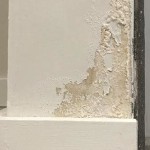Best Way to Clean Bathroom Sink: A Comprehensive Guide
The bathroom sink, a frequently used fixture, is prone to accumulating soap scum, toothpaste residue, hard water stains, and other unsightly marks. Maintaining a clean bathroom sink not only enhances the overall aesthetics of the bathroom but also contributes to a healthier environment by reducing the potential for bacterial growth. This article provides a comprehensive guide to effectively cleaning a bathroom sink, covering various methods and addressing different types of stains and buildup.
Understanding the Composition of Bathroom Sink Stains
Before embarking on the cleaning process, it is essential to understand the nature of the grime that typically accumulates in a bathroom sink. This understanding allows for the selection of appropriate cleaning agents and techniques. Common components of bathroom sink stains include:
Soap Scum: Formed by the reaction of soap with hard water minerals (calcium and magnesium), soap scum creates a dull, white film on the sink surface.
Toothpaste Residue: Dried toothpaste, often containing fluoride and other ingredients, can leave behind a stubborn, chalky residue.
Hard Water Stains: Mineral deposits from hard water can cause unsightly discoloration and scaling, particularly around the faucet and drain.
Mold and Mildew: In humid bathroom environments, mold and mildew can thrive in damp areas around the sink, leading to dark stains and potential health concerns.
Hair and Debris: Hair, dust, and other debris can accumulate in the drain and around the sink, contributing to clogs and unsanitary conditions.
Essential Supplies for Cleaning a Bathroom Sink
Having the necessary supplies readily available streamlines the cleaning process and ensures effective stain removal. The following items are commonly used for cleaning bathroom sinks:
Cleaning Solutions: Options include commercial bathroom cleaners, all-purpose cleaners, vinegar, baking soda, hydrogen peroxide, and dish soap.
Cleaning Tools: Sponges, microfiber cloths, scrub brushes (soft-bristled), old toothbrushes, and squeegees are useful for applying cleaning solutions and scrubbing surfaces.
Protective Gear: Wearing gloves protects hands from harsh cleaning chemicals and prevents the transfer of germs.
Warm Water: Warm water helps to loosen dirt and grime, making it easier to remove stubborn stains.
Spray Bottle: A spray bottle is convenient for applying cleaning solutions evenly.
Paper Towels: Paper towels are helpful for wiping down surfaces and drying the sink after cleaning.
A Step-by-Step Guide to Cleaning a Bathroom Sink
The following steps outline a general procedure for cleaning a bathroom sink. The specific cleaning method may need to be adjusted based on the type and severity of stains present.
Step 1: Remove Loose Debris: Begin by removing any loose debris from the sink, such as hair, dust, or empty containers. This prevents the debris from being spread around during the cleaning process.
Step 2: Rinse the Sink: Rinse the entire sink with warm water to loosen any surface dirt and grime. This prepares the surface for cleaning.
Step 3: Apply Cleaning Solution: Choose a cleaning solution based on the type of stains you are targeting. For general cleaning, an all-purpose cleaner or dish soap diluted in water can be effective. For stubborn stains, consider using vinegar, baking soda, or a commercial bathroom cleaner.
Step 4: Scrub the Sink: Use a sponge, microfiber cloth, or scrub brush to scrub the sink thoroughly. Pay particular attention to areas with visible stains, such as the faucet, drain, and edges of the sink. For hard-to-reach areas, an old toothbrush can be used.
Step 5: Rinse Thoroughly: Once the sink has been scrubbed, rinse it thoroughly with warm water to remove all traces of the cleaning solution. Ensure that no residue remains, as this can attract dirt and grime.
Step 6: Dry the Sink: Use a clean microfiber cloth or paper towels to dry the sink completely. Drying the sink prevents water spots and helps to maintain its shine.
Addressing Specific Stain Types
Certain types of stains require specialized cleaning methods to be effectively removed. The following sections provide guidance on addressing common bathroom sink stain types.
Soap Scum Removal: Soap scum is often resistant to general cleaning solutions. Vinegar is a highly effective natural cleaner for removing soap scum. Spray vinegar onto the affected areas and let it sit for 10-15 minutes before scrubbing with a sponge or brush. Alternatively, a paste of baking soda and water can be applied to the soap scum and scrubbed gently.
Hard Water Stain Removal: Hard water stains can be treated with vinegar or lemon juice, both of which contain citric acid. Soak a cloth in vinegar or lemon juice and place it over the stained area for several hours or overnight. Then, scrub the area with a brush and rinse thoroughly. For more stubborn hard water stains, consider using a commercial hard water stain remover.
Mold and Mildew Removal: Mold and mildew can be removed with a solution of bleach and water (1 part bleach to 10 parts water). Apply the solution to the affected areas and let it sit for 10-15 minutes before scrubbing. Ensure adequate ventilation when using bleach. Alternatively, hydrogen peroxide can be used as a less harsh alternative. Spray hydrogen peroxide onto the mold or mildew and let it sit for 10-15 minutes before scrubbing.
Toothpaste Residue Removal: Toothpaste residue can usually be removed with warm water and a sponge. For more stubborn residue, try using a small amount of dish soap or a paste of baking soda and water.
Natural Cleaning Solutions for Bathroom Sinks
For those who prefer to avoid harsh chemicals, several natural cleaning solutions are effective for cleaning bathroom sinks:
Vinegar: Vinegar is a versatile cleaner that can be used to remove soap scum, hard water stains, and general grime. Its acidity helps to dissolve mineral deposits and kill bacteria.
Baking Soda: Baking soda is a mild abrasive that can be used to scrub away stains and deodorize the sink. It is particularly effective for removing toothpaste residue and soap scum.
Lemon Juice: Lemon juice contains citric acid, which can help to dissolve hard water stains and kill bacteria. It also leaves a fresh, citrusy scent.
Hydrogen Peroxide: Hydrogen peroxide is a mild disinfectant that can be used to kill mold and mildew. It is also effective for removing stains from grout.
Dish Soap: Dish soap is a gentle cleaner that can be used for general cleaning and to remove grease and grime.
Maintaining a Clean Bathroom Sink
Regular maintenance is crucial for preventing the buildup of stains and maintaining a clean bathroom sink. The following tips can help to keep the sink clean:
Wipe Down the Sink Daily: Wipe down the sink with a damp cloth or sponge after each use to remove any spills or splatters. This prevents stains from setting in and makes it easier to clean the sink later.
Rinse the Sink Regularly: Rinse the sink with warm water regularly to remove any loose debris or grime.
Clean the Sink Weekly: Clean the sink thoroughly at least once a week using a cleaning solution of your choice. This prevents the buildup of stains and maintains a clean and sanitary environment.
Address Stains Promptly: If you notice any stains, address them promptly to prevent them from becoming more difficult to remove.
Ventilate the Bathroom: Ensure adequate ventilation in the bathroom to prevent the growth of mold and mildew. Open a window or use the exhaust fan after showering or bathing.
Use a Squeegee: Use a squeegee to wipe down the sink and surrounding surfaces after each use to remove water and prevent water spots.
Consider Water Softener: If hard water is a persistent issue, consider installing a water softener to reduce mineral buildup.
Cleaning Different Types of Bathroom Sink Materials
The type of material the bathroom sink is made from impacts the cleaning methods and products that should be used. Different materials have varying levels of durability and sensitivity to chemicals. Below we cover popular counter materials and cleaning methods.
Ceramic and Porcelain Sinks: These are some of the most common and durable sink materials. They are generally resistant to most cleaning products, but abrasive cleaners should be avoided as they can scratch the surface. Non-abrasive creams, gentle scrubs, and standard all-purpose cleaners work well.
Stainless Steel Sinks: Stainless steel is known for its durability and resistance to rust. However, it can be prone to water spots and fingerprints. Use cleaners specifically designed for stainless steel, or try a mixture of baking soda and water. Always wipe in the direction of the grain to avoid scratches.
Stone Sinks (Granite, Marble, etc.): Natural stone sinks require extra care because they are porous and susceptible to staining. Use pH-neutral cleaners specifically formulated for stone. Avoid acidic cleaners like vinegar or lemon juice, as they can etch the surface. Seal regularly to protect the stone.
Glass Sinks: Glass sinks can be visually striking but require gentle cleaning to avoid scratches. Use a mild glass cleaner or a mixture of vinegar and water. Avoid abrasive cleaners and scrub brushes.
Acrylic Sinks: Acrylic sinks are lightweight and relatively inexpensive but can scratch easily. Use non-abrasive cleaners and soft cloths or sponges.
Cleaning the Faucet and Drain
Cleaning the faucet and drain is an integral part of cleaning the bathroom sink. These areas are prone to buildup and can harbor bacteria.
Cleaning the Faucet: Wipe down the faucet with a damp cloth or sponge after each use to remove water spots and spills. For deeper cleaning, use a cleaner appropriate for the faucet's finish (chrome, brushed nickel, etc.). A toothbrush can be used to clean around the base of the faucet and in hard-to-reach areas. To remove mineral deposits, wrap a cloth soaked in vinegar around the faucet and let it sit for a few hours or overnight.
Cleaning the Drain: Regularly flush the drain with hot water to prevent buildup. To remove clogs, try using a plunger or a drain snake. For stubborn clogs, consider using a drain cleaner or a mixture of baking soda and vinegar (pour 1/2 cup baking soda down the drain followed by 1/2 cup vinegar, let it fizz for 30 minutes, then flush with hot water).
Cleaning the Overflow Drain: The overflow drain can accumulate grime and bacteria. Use a small brush or pipe cleaner to scrub the inside of the overflow drain. You can also pour a diluted bleach solution or a mixture of baking soda and vinegar down the overflow drain to disinfect it.

How To Clean A Bathroom Sink Maids By Trade

How To Clean Your Bathroom Sink Cleaning Services Denver Co

How To Properly Clean A Bathroom Sink Pkb Cabinetry

Bathroom Cleaning S How To Clean The Frugal Family Home

How To Clean Bathroom Sink Counters Daily Routine Periodic Deeper Cleaning Tasks

How To Clean A Bathroom Sink No Matter The Material
Best Bathroom Cleaning S Of 2024

How To Clean A Bathroom Sink Make Your Basin Sparkle Again Budget Savvy Diva

How To Clean A Bathroom Sink

9 Bathroom Cleaning S To Sd Up Your Clean
Related Posts







